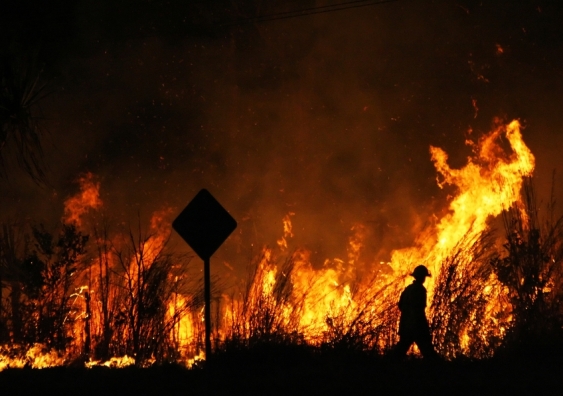Navigating Property Security: Comprehending the Value of a BAL Report
Navigating Property Security: Comprehending the Value of a BAL Report
Blog Article
How BAL Report Impacts Bush Fire Security Measures
In the realm of bush fire defense, the Structure Strike Level (BAL) report stands as a vital device that dramatically influences the safety and security and strength of homes in fire-prone areas - BAL Report. The effect of a BAL analysis prolongs much beyond simple documentation; it acts as the cornerstone for determining the suitable building and construction criteria and fire defense procedures essential to minimize the threats postured by bushfires. As areas come to grips with significantly extreme fire periods, recognizing just how the BAL record shapes these protective measures becomes critical for home builders, policymakers, and house owners alike
Understanding the Bushfire Assault Level

Significance of BAL Record Analysis

Moreover, the BAL report analysis offers as a fundamental action in complying with legal commitments and needs connected to bushfire defense. Neighborhood councils and authorities usually mandate the submission of a BAL report as part of the preparation and structure authorization procedure to make sure that buildings are properly protected versus bushfire risks. Failing to perform a thorough BAL record evaluation can lead to insufficient security measures, leaving homes susceptible to ravaging bushfire incidents.
Construction Standards Based Upon BAL
A comprehensive understanding of the Bushfire Strike Level (BAL) enables residential or commercial property owners to implement building standards tailored to their particular threat account. Construction criteria based on BAL are essential in alleviating the impact of bushfires on buildings. The BAL ranking classifies the prospective risk a home deals with during a bushfire on a scale from BAL-Low to BAL-FZ (Fire Zone)
Implementing Fire Protection Steps
With the foundation of construction criteria based on Bushfire Attack Degree (BAL) in position, the focus currently moves in the direction of the sensible application of fire protection measures to strengthen residential or commercial properties against bushfire dangers. Executing fire protection procedures includes a combination of passive and energetic techniques to enhance the strength of buildings in he has a good point bushfire-prone areas. Passive measures include making use of fire-resistant building products, mounting cinder guards on vents, securing spaces in roofing systems and wall surfaces, and keeping a clear area around the home devoid of flammable vegetation. Active measures incorporate having additional reading firefighting equipment easily available, such as hoses and water pumps, in addition to developing a defendable space around the property by removing plant life and having a well-kept yard. Additionally, creating an emptying plan and making certain all residents recognize emergency situation treatments are critical elements of efficient fire security actions. By incorporating both passive and active approaches, residential or commercial properties can dramatically reduce their vulnerability to bushfire cases and increase the safety of residents.
Shielding Homes Against Bushfires
Successfully safeguarding homes versus the damaging impacts of bushfires needs a thorough and proactive technique to fire defense procedures. In addition, sealing spaces and vents to protect against ash intrusion, as well as incorporating fire-resistant doors and home windows, can assist strengthen the home's defense against bushfires. By accepting a positive stance and incorporating these safety actions, property owners can considerably boost their chances of guarding their homes against bushfires.
Final Thought
In conclusion, the Bushfire Assault Level (BAL) report plays a vital duty in figuring out the necessary protection procedures against bushfires. Applying fire security actions based on the BAL report is necessary in protecting residential properties from potential bushfire threats.
In assessing bushfire danger to residential properties, understanding the Bushfire Attack Level (BAL) is an important component for carrying out reliable defense steps. In general, a clear understanding of the Bushfire Assault Degree is crucial for implementing ample my response defense measures and mitigating the impact of bushfires on properties.

Report this page